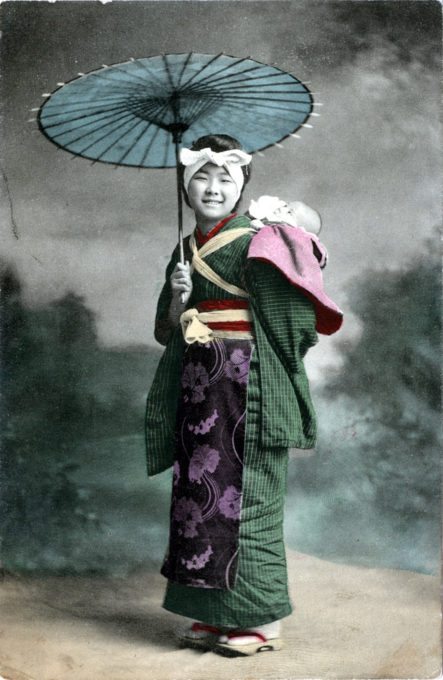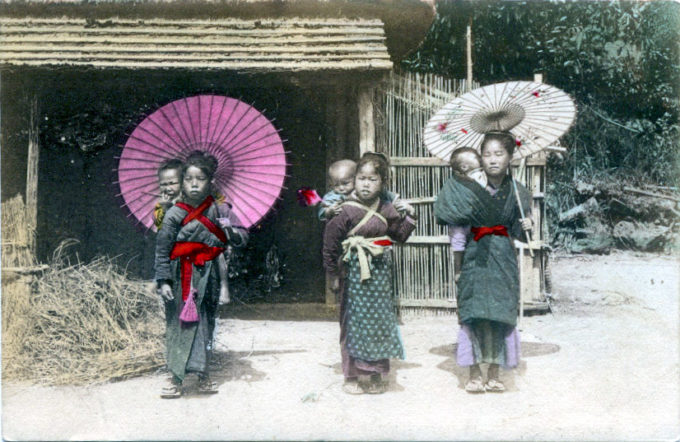“All the men and women were at work, and all the children carrying babies. In this street, as in all other thoroughfares, the number of children is astounding. Salt Lake City is childless as compared any Japanese quarter whether in town or country.
“The stranger is startled by the first impression all the girls are born double-headed. To see girl from three years old up to twelve is to make the discovery of a second and smaller head apparently growing on her right or left. On closer inspection this turns out to be a baby, which she is carrying strapped to her back, no portion of it visible except its head and face.
“I could not learn at what age a girl is held to be capable of carrying a baby but I have seen scores whose age did not exceed four staggering under the weight of an infant brother or sister bound to its back.
“This is the national form of carrying what in England are known as infants-in-arms. The Japanese equivalent to this would naturally be infants on back. I do know how it is for the infant but it is evidently very convenient way for the bearer. Women carrying children can and do go about their work as if they had no incumbrance, whilst children play about the streets just as if the baby on their back were a wart or other natural excrescence.
“I never saw in Japan a baby held in any other fashion, with the single exception a man in Oyama who dandied one in his arms and he – I subsequently ascertained – was a man of weak intellect.”
– The Japan Daily Mail, March 1, 1884
Onnanoko carrying child, c. 1910.
1910s • Arts & Culture • Lifestyle
Tagged with: Bijin, Children, Onnanoko
Please support this site. Consider clicking an ad from time to time. Thank you!



